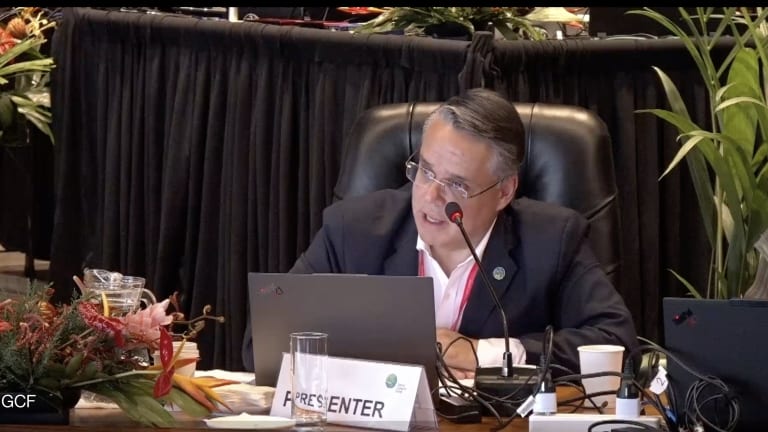
The European Investment Bank will grow the share of its climate lending going to adaptation projects to 15% by 2025, its vice president told Devex Tuesday.
Speaking at the Future of Development Finance event, Ambroise Fayolle said that would mean around €4.5 billion ($5.21 billion) annually for projects aimed at addressing the effects of climate change or adaptation, rather than reducing emissions or mitigation.
“The 15% adaptation target should only be a stepping stone towards more ambitious objectives, in particular outside the EU ... where 50% should be a benchmark.”
— San Bilal, European Centre for Development Policy ManagementThe bank has been criticized for not doing enough regarding adaptation to date. EIB allocated 10% of its overall climate finance for adaptation in 2020, or $2.7 billion, but just $971 million in 2019, and $432 million in 2018.
Fayolle noted that the bank’s overall lending on climate and environment sustainability is set to increase from around 25% to 50% by 2025, under a road map agreed last year. “The basis also is going to increase, which is going to make the effort even bigger for us in terms of adaptation,” he said. “And I think it is really welcome because we need that.”
The move to increase adaptation efforts, which Fayolle said will include more technical assistance, is part of the bank’s climate adaptation plan, due to be released next week during COP 26. The plan will apply to the bank’s work inside and outside the European Union — with the latter accounting for 13% of EIB’s total lending in 2020.
San Bilal from the think tank European Centre for Development Policy Management wrote by email that the move was “excellent news that the EIB finally takes climate adaptation seriously.” At the same time, he told Devex “the 15% adaptation target should only be a stepping stone towards more ambitious objectives, in particular outside the EU, in developing countries, where 50% should be a benchmark.”
Report: $100B climate finance commitment won't be met until 2023
High-income countries promised in 2009 to deliver $100 billion annually to help lower-income nations deal with climate change effects. A new report predicts that these nations will have to keep waiting for it.
In a departure from the bank’s usual practice of financing no more than 50% of a project in order to crowd in other investors, Fayolle said the new strategy would allow EIB to finance up to 75% of an adaptation project, and up to 100% for those in least-developed countries and small island states.
Clara Bourgin, policy and advocacy officer at the NGO Counter Balance, which scrutinizes EIB, told Devex by email that it was unclear whether more money for adaptation was good news in itself. “A key issue we see is that the focus is often on making such projects ‘bankable,’” Bourgin wrote, “even though adaptation projects should not really be based on the generation of revenues.”
Cinzia Losenno, lead adaptation expert at EIB, responded that the bank had a duty to support capital intensive public sector investments in things like flood protection. At the same time, she said EIB was keen to support private sector innovation on climate resilience, such as water-saving technology and flood- and drought-resistant seeds, as well as data and analytics.
Losenno added that greater support for coastal cities would be one area of focus, including early warning systems and seawalls, as well as storm water management to prevent flooding.








